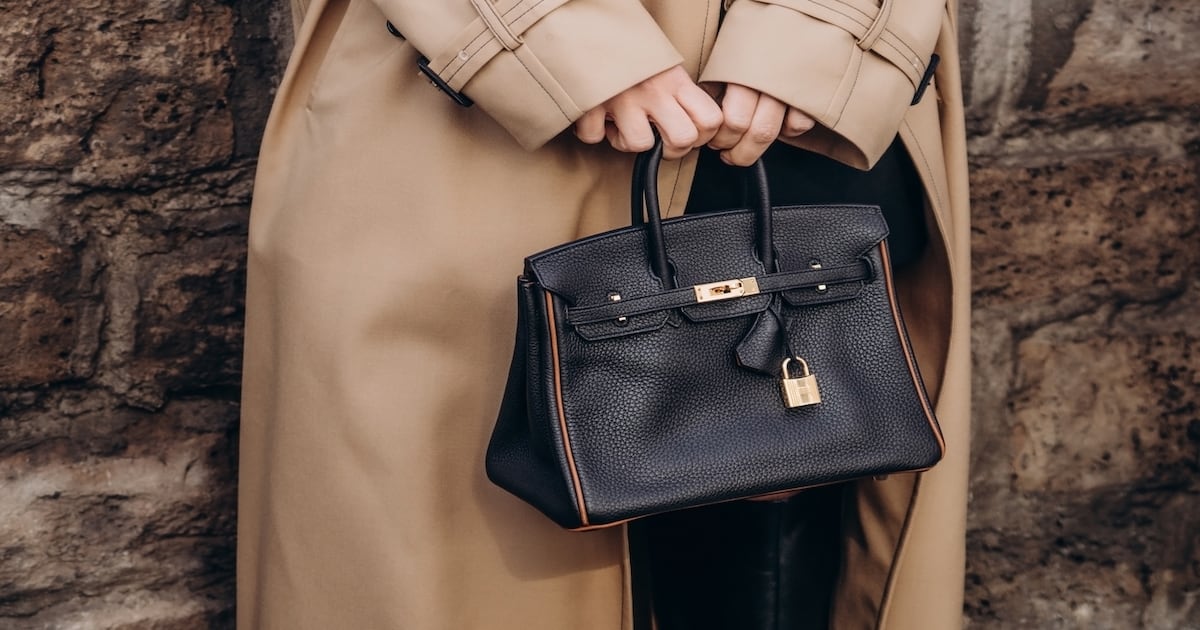
The best luxury brands rarely go on sale. Not so their share prices.
Valuations across the sector have tumbled on a deteriorating Chinese economy and sluggish US demand. But investors with a long-term view may be able to salvage something from the bursting of the bling bubble.
The hoped-for rebound in top end goods this year has yet to materialise. The next few months, and into 2025, look tricky. The main culprit is China, whose shoppers accounted for 23 percent of the global personal luxury-goods market last year, according to Bain & Co., and where appetite for Louis Vuitton handbags and Burberry scarves has stalled.
Indeed, concerns are rising that the market has declined further amid a prolonged economic downturn and housing slump. Weak Swiss watch exports to China and Hong Kong; LVMH Moet Hennessy Louis Vuitton SEâs Sephora laying off 10 percent of its 4,000-strong workforce in China and sluggish tourism to Europe are all adding to the sense of gloom.
While the US is showing some improvement, thanks to stock indexes recovering after the brief selloff in August, and the fact that European luxury groups have opened stores there in the past few years, the forthcoming presidential election makes for an uncertain holiday season.
Disruption in Paris over the Olympic and Paralympic games, and limited switching to other cities such as Milan, hasnât helped either. Add in signs of a luxury backlash after big price increases, and the outlook is bleak.
According to analysts at HSBC Holdings Plc, luxury sales growth excluding currency movements could be just 2.8 percent in 2024, the sixth-worst year in the past two decades, based on its estimates of prior-year sales.
Little wonder that stocks have fallen. The MSCI Europe Textiles, Apparel and Luxury Goods Index is down more than 25 percent since its high in March. The typical premium to the MSCI Europe Index has narrowed.
LVMH, the worldâs biggest luxury-goods group, and a proxy for the sector, is at its lowest level for two and a half years, after losing more than 30 percent of its value. Consequently, it trades at a price-earnings ratio of about 19 times, below its five-year average of 26.5, according to data compiled by Bloomberg, and its 30-year average of 21, according to analysts at Stifel.
Of course, the danger is that the earnings side of the equation comes under more pressure. The post-Covid-19 boom inevitably drove up companiesâ costs. But even so, long-term the appeal of bags and other baubles should be undiminished.
In China, consumers are wearing luxury differently â mixing and matching with cheaper brands, and spending more on experiences, for example. But demand from the countryâs shoppers wonât disappear. Bain & Co. still expects them to account for a bigger share of the personal luxury-goods market by 2030. While there wonât be another China to turbocharge growth, there will be pockets of new shoppers elsewhere. Brands, for example, are becoming increasingly interested in India.
At the same time the USâs relationship with top-end goods has fundamentally changed. Up to a few years ago, the country was an under-penetrated market. But Louis Vuittonâs appointment, first of the late Virgil Abloh, and then musician Pharrell Williams, as creative director of its menswear range, has made the European names more accessible to a broader range of US consumers. Shoppers may be holding off for now, after having overindulged, but even with the current indigestion, that relationship is unlikely to break down altogether.
Against this backdrop, LVMH looks well placed. Although it is exposed to the difficult wines and spirits sector, it owns two of the worldâs biggest luxury brands: Louis Vuitton and Dior. Its might â sales have risen about 60 percent since 2019 â means it can afford to shout louder than rivals, keeping its brands at the forefront of consumersâ minds.
Investing â¬150 million ($167 million) to be the Olympic and Paralympic Gamesâ creative partner, and an expected â¬150 million deal to sponsor Formula One underline how it can outspend rivals. There might even be opportunities to employ its strong balance sheet to acquire. Despite its scale, it still has room to grow in watches, skincare and hospitality.
Although shares in Hermes International SCA havenât fallen as far as peers, they have given up most of their gains this year. The company is more resilient, as it can effectively dictate its own level of demand. Far more consumers want to buy its coveted Birkin and Kelly bags than are available, meaning it has a continual supply for customers. Consequently, it still trades on a forward P/E of about 41 times. But thatâs below the five average of 49.
Itâs a similar picture at Cie Financiere Richemont SA, down almost a quarter since June. It has exposure to the struggling Swiss watch sector, but 52 percent of its sales last year came from jewellery, which may hold up better, given that price increases have lagged those of many handbags. It owns two of the top brands, Cartier and Van Cleef & Arpels â still favourites among Chinese shoppers. And Prada SpA, also down about 25 percent since late May, is still generating strong growth, thanks to the popularity of its Miu Miu sister label, where retail sales rose 95 percent in the second quarter.
But turnaround stories such as Kering SA, where a more muted revival of Gucci has driven the shares to a seven-year low, and Burberry Group Plcâs latest attempt to reinvent itself, look more vulnerable to worsening conditions.
The risk for all is that the Chinese contraction turns into a more protracted rout, rendering the luxury slump deeper for longer.
But the pain from the bling bloodbath wonât be felt evenly. As with a watch or handbag, investors should choose the names that can stand the test of time.
By Andrea Felsted

